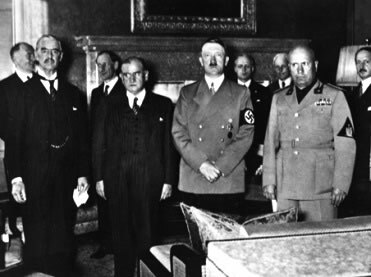The peace treaties signed after World War I are important documents for understanding the reasons that led the great world powers to a new conflict. Very severely, the points of each of these agreements ordered the imposition of harsh punishments that promoted a serious economic crisis among the defeated nations. Among the most affected states, we can highlight the impacts suffered in Germany and Italy.
Even being part of the victorious group of the First War, Italy did not obtain the due compensation in the signed agreements. The economic and financial losses brought about by the conflict were followed by high unemployment rates, the paralysis of productive sectors and various social upheavals of far-right movements and left. At that moment the figure of Benito Mussolini emerged, who instituted a totalitarian government supported by promises of supremacy and recovery of the Italian situation.
Experiencing even more severe impacts, Germany had its crisis as a consequence of the punishments imposed by the Treaty of Versailles. The German inflationary process caused the population to accumulate bags of money to buy a simple slice of bread. Amid such adverse conditions, a former Austrian fighter named Adolf Hitler led the formation of the National Socialist German Workers' Party. Following anti-democratic, racial and imperialist doctrines, Hitler became the top leader of the German state.
The political inefficiency of the League of Nations, a body created after World War I, was also of great importance. Without the effective support of the main powers of the time, this international body did not curb the resumption of conflicts and diplomatic hostilities that were retaking the international political scene. In 1931, Japan promoted the invasion of Chinese territory in Manchuria. Four years later, the Italians conquered Abyssinia (now Ethiopia). Under Hitler's command, the German government breached the Treaty of Versailles by taking the Saar and Rhineland regions.
The fear of a new war made other nations to be tolerant of such imperialist actions. After forming a military partnership in the Spanish Civil War (1936 – 1939), Germans and Italians showed themselves to be prepared for a new war. With the later support of the Japanese government, Germany and Italy formed the Rome-Berlin-Tokyo Axis. Shortly thereafter, claiming the existence of a German majority in the region, Hitler annexed the region of the Sudetenland that was dividing with the Czech Republic.
Faced with the German invasion of the state created by the winning powers, England and France summoned Hitler and Mussolini for a round of negotiations. At the so-called Munich Conference, French and British representatives opted for recognition of the German conquest, after Hitler pledged not to make any further territorial conquests without the consent of England and the France.
On the other hand, England and France had pledged to protect Poland, a region coveted by the Germans, from any attack on their territories. Hitler's greed for this region came from the control of the so-called “Polish corridor”, which led to an exit to the sea, at the Port of Dantzing. Taking his last step into war, Hitler secured a non-aggression agreement with the Russians through the German-Soviet Pact in 1939. Avoiding a confrontation with the Soviet power, Nazi troops invaded Poland that same year. Thus, the Second World War began.
Do not stop now... There's more after the advertising ;)
20th century - wars - Brazil School
Would you like to reference this text in a school or academic work? Look:
SOUSA, Rainer Gonçalves. "Preparations for World War II"; Brazil School. Available in: https://brasilescola.uol.com.br/guerras/os-preparativos-segunda-guerra-mundial.htm. Accessed on June 27, 2021.



